Notes
Visual Politics and the March for Science: What Caught our Eye

The Trump administration’s across-the-board attack on science — from the environment to basic health, and from research and application to education and data integrity — is unprecedented. So is its negation of critical thought itself. Many signs at this weekend’s worldwide March for Science, called out the idiocy of having to protect and defend science in the first place.
As far back as I remember, I haven’t seen a protest for science. For that reason, I was interested in some of symbols, the visual metaphors, and how more traditional protest symbols were being repurposed.
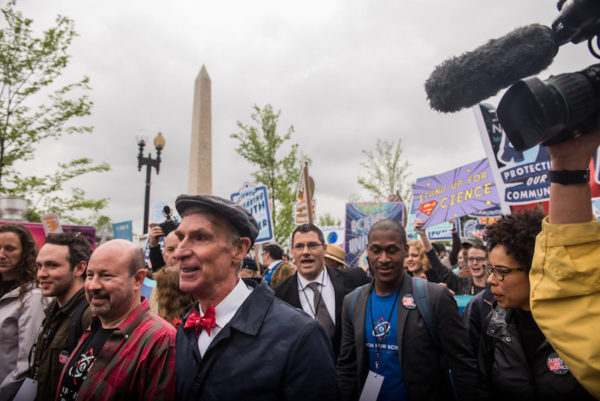
It our culture, statements and movements dependent a great on personalities. It’s understandable that Bill Nye is out front in the Washington march, but he’s still more of an entertainment figure. What’s telling is that there aren’t more recognizable scientists in the political realm (remember C. Everett Koop?) to help lead the charge.
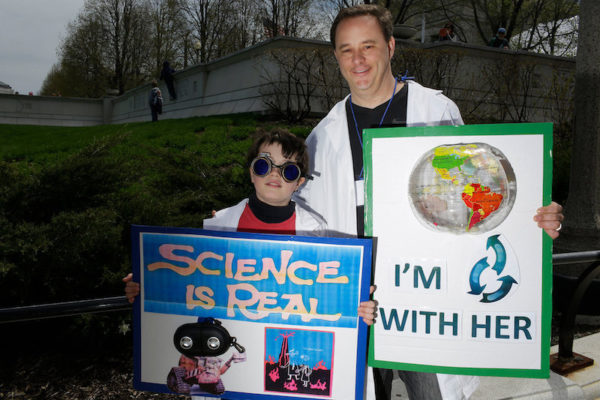
I like how the kid’s sign and headwear clearly frames the issue as a failure to see, or a political blindness. With Trump in mind, it also reminds me of the famous phrase applied to bullies and the abusers: “are you going to believe me, or your own eyes?”
Regarding the father’s sign, it’s not just the reframing of the Hillary chant. It’s the way the sign links the science march to the woman’s march, Mother Earth to the fight for gender equality, and Saturday’s march to the larger confluence of resistance and activism.
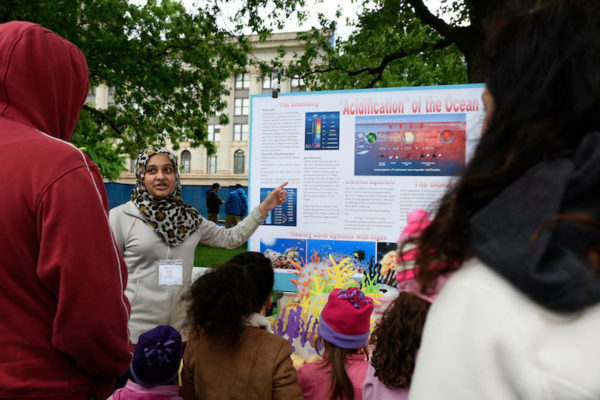
I doubt this photo would have made the NYT slideshow if this woman wasn’t wearing a hijab. This is where science and the environment crosses into immigration and visa policy, and the disproportionate investment in militarism largely based on the demonization of the Muslim world.
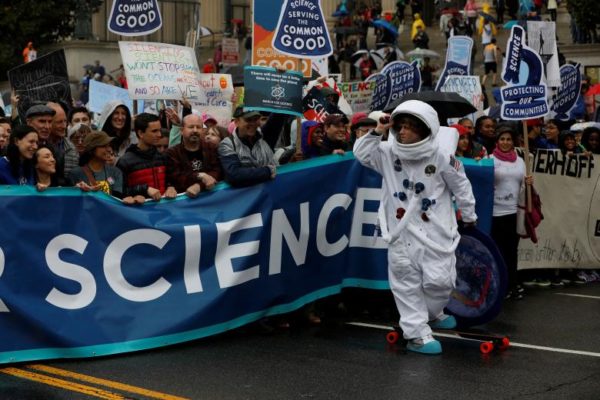
Good for the cause right now, the love of space has largely remained non-partisan.
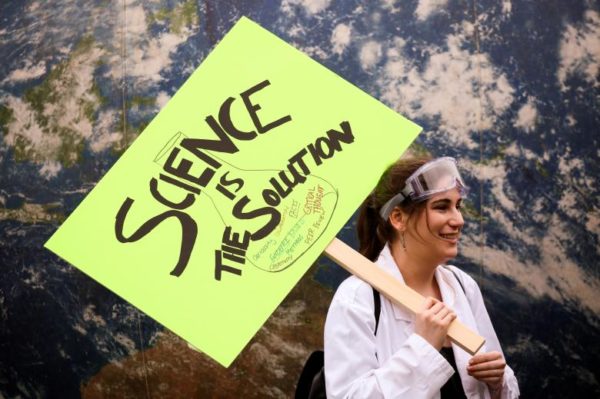
A solution is both a material and an outcome.
What has been woefully missing since Trump took office is process, and the regard for process. What is so important about science, and a boon to all political discussion and debate right right now, is how explicit the lack is. Trump only relates to results, as if process wasn’t necessary or difficult. The way he talks, complex things just happen by magic.
I believe the tape over the mouth was first popularized by the pro-life movement. If that’s true, this is an ironic twist on the highjacking and potential neutering of EPA’s life affirming mission. It also calls out the attack on the lack of process. Science is as much an exchange and dialogue.
I know the newswires like to stress geography when an event occurs in multiple places. Still, I thought there was an echo, and something aspirational about Reuters running this photo in their “March for Science” slide show. If you think about memorable protests and ones that tipped the scales, there was none bigger than the WTO protest in Seattle. The demonstration became a key marker of the anti-globalization movement. Could the science march and the upcoming Earth Day march do the same for the planet itself?
Beyond the more political messaging, though, Saturday’s actions around the world were characterized by the predominance of clever and more geeky messaging such as the “Mitosis” pic leading this post. As much as science is taken for granted, the point of the march is that science is essential, that it’s literally everything.
— Michael Shaw
Photo: WIRED Science March slideshow. Caption: Fabianny Silverio, an undergrad at UMass Dartmouth, studies marketing and is out in Boston today with a message of inclusion; Photo 2: Hilary Swift for The New York Times. Caption: Bill Nye attended the Washington march. Photo 3: Joshua Lott for The New York Times. Caption: Miles Toppen, left, attended the Chicago march with his father Trevor Toppen; Photo 4: Nick Oxford for The New York Times. Caption: Kulsoom Ghias, a high school student, presented her science club’s project on ocean acidification at the march in Oklahoma City. Photo 5: Aaron P. Bernstein/REUTERS. Caption: Demonstrators march to the U.S. Capitol during the March for Science in Washington, April 22, 2017. Photo 6: David Ryder/REUTERS. Caption: A protestor holds a sign in support of science during the March For Science in Seattle; Photo 7: Andrew Kelly/REUTERS. Caption: Mary Devine of Levittown, Long Island looks on during the Earth Day ‘March For Science NYC’ demonstration to coincide with similar marches globally in Manhattan. Photo 8: David Ryder/REUTERS. Caption: Volunteers hold their fists in the air during the March For Science in Seattle;




Reactions
Comments Powered by Disqus